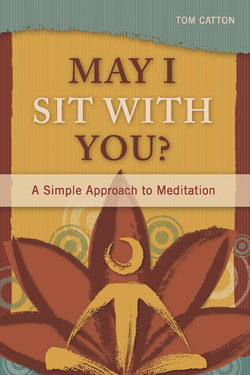Читать книгу May I Sit with You? - Tom Catton - Страница 15
На сайте Литреса книга снята с продажи.
ОглавлениеCHAPTER FIVE
GUIDANCE
As we travel across our beautiful planet, we are guided by signs posted on the roadways that indicate where we are and how to get where we’re going. For more information, we refer to a map. Since roads and pathways have true directions, wouldn’t our spiritual path also have true directions?
The practice of meditation, encouraged in Step Eleven, serves as our signpost and map as we travel the spiritual path. Access to these directions will assure us that we’re in the right place at the right time. Anyone who is a true seeker has a lot of “baggage”—after all, we are on a spiritual journey! The information you find within you when practicing sitting meditation tells you what to carry and what to discard.
Be mindful as you follow your breath. While breathing in, pay attention to breathing in. While breathing out, pay attention to breathing out. Observe your thoughts as they float by. In this simple act of practicing the presence—not attaching to any of our thoughts—we can become receptive to the whisper of the universe. We can always find the inspiration that leads us closer to our soul’s purpose.
In my study of mindful meditation, I haven’t discovered a lot written about the guidance we can find in our practice. My motivation for exploring this phenomenon is my interest in Buddhist recovery. I realize the Buddha’s teachings are primarily concerned with suffering and following the path to end that suffering. Buddha wasn’t a big “God guy”; in fact, contained within the Buddhist mythology is a story where Buddha chastises Brahma, the Hindu deva (god) of creation, for returning beings to the cycle of birth and rebirth. Yet regardless of Buddhism’s views toward any belief in a supreme being, so many people attracted to Buddhist recovery have no problem with the word God. They’re not insinuating that there is a guy with a long white beard directing our lives. “God” is just another way of speaking of the force of love that connects all things.
Throughout the past forty years, I have practiced the art of mindful listening in my meditation. My previous book, The Mindful Addict, is full of stories documenting many adventures ignited by guidance I discovered while listening within. Yes, most of the time it is monkey mind. Monkey mind is a Buddhist term meaning “unsettled; restless; whimsical; inconstant; confused; indecisive; uncontrollable.” The monkey jumps through the trees from one branch to the next; this is a metaphor for our thoughts as our mind jumps from one thought to the next. So when it is not monkey mind, it is important to follow your heart.
I ask any Buddhist who is not fully convinced about guidance or thinks it sounds too much like theism and the supreme-being gig to think about the Buddha as he sat under the tree and experienced his miraculous awakening. When he came up with the Four Noble Truths, where did they come from? Was this inspiration he received? I think so. And I call that divine guidance.
